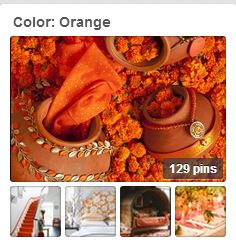I love the color in this cement tile floor. Notice how the cement tile pattern blends similar colors to create a simpler pattern? If you're having trouble finding the right color, design or pattern, then these cement tile design trends may provide the answer you were looking for.
| Traditional Sosua Cement Tile installed as a rug |
If you're new to cement tiles, then these trends are the perfect designing tips for you!
Tip #1: Strong patterns can be "softened" with the use of similar colors that help blend a design together.
| More ornate, traditional patterns are finding their way into homes with fewer colors |
Tip #2: Bold patterns can be softened with the use of muted colors.
 |
| Patterns will be less commanding if you use muted colors like this customer did with our Zebra pattern in B Colorway. |
Tip #3: Geometric patterns using straightforward palettes with two or three colors are a great way to introduce cement tile and a bold splash of color into your home. It's also a strong design trend as homeowners, architects and designers consider cement tile for floors and kitchen or bathroom backsplash.
 |
| Cement Tile Design Trend: Geometric patterns using two to four colors |
Cement Tile Color Trends
After returning from Coverings 2012, I was so ecstatic about the use of color in the tile I saw that I couldn't wait to get home so I could blog about it (see Tile Trends from Coverings 2012). For the first time in a very long time, I saw the use of color and color tile on the show floor. I'm thrilled to report that the trend continues from what I saw recently during Coverings 2013. Despite an extensive palette of more than 80 colors, I'm finding there is a strong design sense to use grey tones in cement tiles. In fact, Avente just submitted samples of Dark Shadow, Ash Grey, Grey, and Pewter for a new restaurant that will require more than 1,000 square feet of tile! I guess this shouldn't come as a big surprise. Interior Designer and go-to color maven, Lisa M. Smith, recently explained, Black, White & Gray – The New Fall Interior Palette.
 |
| Subtle and complex grey tones are popular color choices for cement tile. |
The other strong trend has been the increased use of steel blues or gray-blues. The rendering below shows the final design and colors of the cement tiles destined for a New York City hotel.
| Traditional Bruselas cement tile rendering with Steel Blue Colors |
Tip #4: Use colors in the pattern that already exist in your home. Avoid bringing in new colors just because you like them.
Cement Tile Takes Shape With Arabesque Designs
Cement tiles are not confined to just a rectangular format. Their strength and durability easily lend themselves to the geometric, Moorish-inspired Arabesque cement tile patterns. Customers gravitate to the natural red, brown, and terracotta bisque colors these tiles adroitly mimic. However, the gray colors from this palette are a popular choice, too.
Tip #5: A different format or shape in just one or two colors will provide interest and subtle texture.
Have a Question? A tip you'd like to share?
Do you have a favorite cement tile tip or nagging question? Contact us or leave a comment. We'd love to hear from you!
Sign up to Receive our Free Monthly Newsletter
If you love tile, you'll enjoy Tile Talk. The newsletter provides information on specials, tile tips, design ideas, and new products. Don't delay! Sign up now to receive our free monthly newsletter via email.
Do you have a favorite cement tile tip or nagging question? Contact us or leave a comment. We'd love to hear from you!
Sign up to Receive our Free Monthly Newsletter
If you love tile, you'll enjoy Tile Talk. The newsletter provides information on specials, tile tips, design ideas, and new products. Don't delay! Sign up now to receive our free monthly newsletter via email.






